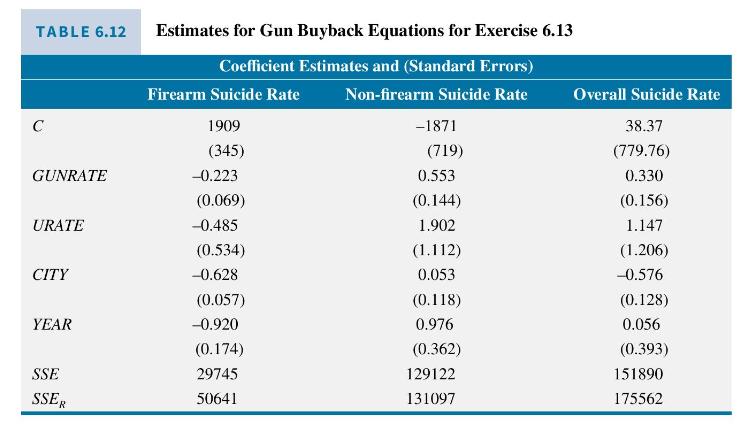Do gun buybacks save lives? Following the Port Arthur massacre in 1996, the Australian government introduced a
Question:
Do gun buybacks save lives? Following the "Port Arthur massacre" in 1996, the Australian government introduced a gun buyback scheme in 1997. The success of that scheme has been investigated by Leigh and Neill. \({ }^{14}\) Using a subset of their data on the eight Australian states and territories for the years 1980-2006, with 1996 and 1997 omitted, making a total of \(N=200\) observations, we estimate the following model
![]()
Three equations are considered, one where SUIC_RATE denotes the firearm suicide rate, one where it represents the non-firearm suicide rate and one for the overall suicide rate, all measured in terms of deaths per million population. For the years after 1997, the variable GUNRATE is equal to the number of guns bought back during 1997, per thousand population; it is zero for the earlier years; URATE is the unemployment rate, CITY is the proportion of the population living in an urban area and YEAR is included to capture a possible trend. The estimated equations are given in Table 6.12.

a. Is there evidence that the gun buyback has reduced firearm suicides? Has there been substitution away from firearms to other means of suicide? Is there a trend in the suicide rate?
b. Is there evidence that greater unemployment increases the suicide rate?
c. Test jointly whether \(U R A T E\) and CITY contribute to the each of the equations. The sums of squared errors for the equations without these variables are given in the row \(S S E_{R}\).
Step by Step Answer:

Principles Of Econometrics
ISBN: 9781118452271
5th Edition
Authors: R Carter Hill, William E Griffiths, Guay C Lim





